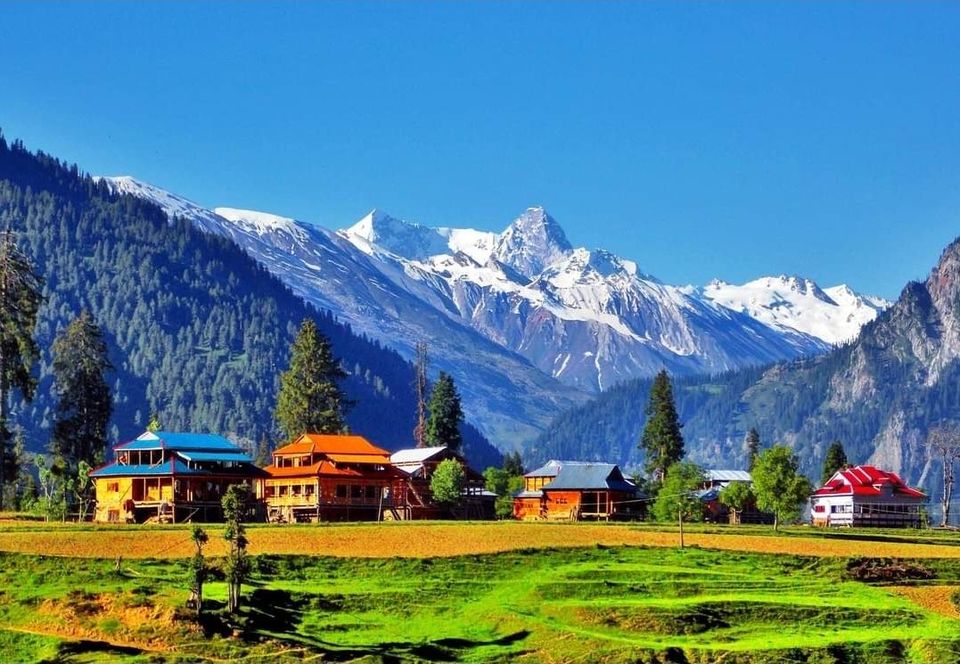Reforming Agriculture Sector in Pakistan.
By Dr. Fahad Ahmad Awan
Agriculture is the backbone of Pakistan’s economy. It accounts for 19% of the GDP and, together with agro-based products, fetches 80% of the country’s total export earnings. More than 42.3% of the labor force is engaged in this sector.
The most populated province of Punjab provides the largest share of national agricultural production. Agriculture offers 19% of the GDP and 48% of the population employment. It contributes to providing raw materials to major industries; textile, leather, rice processing, edible oil, sugar, and various food processing industries. Pakistan’s total export has a three-fourth share of agriculture, and 60% comes from Punjab. The Province of Punjab has led the way in the agriculture sector Over the years followed by Sindh.
The Province of Punjab is the hub of the agriculture sector in Pakistan. Punjab becomes the second largest province making 25.9% of the country’s total land, with an area of 20.63 million hectares. Land utilization status is accessible for 86% of the aggregate territory, while 14% of land stays unreported. Another 14% of the area is not available for agriculture due to being fertile or occupied by infrastructure; consequently, only 72% of the land is available for cropping. 10.81 million hectares (53%) is a net sown area, an area that is cultivated at least once and year. 9% of the land is categorized as current fallow, a site not used for cultivation for a year. 8% of the land is marked as culturable waste, which means an area not cultivated for more than three years and is a part of the cultivated area.
Census of agriculture 2016-17 shows that there were 5,249,800 agriculture farms in Punjab; these farms consist majorly of tiny farms. 42% of the farms are even less than one hectare. Farms ranging from one hectare to 10 hectares make up half the total number of farms and occupy 68.9 % of the whole area. Farms consisting of 10 hectares and above are 22.2% of the total farm area.
Punjab’s total cropped area was 16.68 million hectares; this depicts that 5.87 million hectares were sown more than once during the year. In 2018-19, wheat was cut in 40% of the land; similarly, cotton occupies 11.5%, and rice 12.8% of Punjab’s total cropped area. Fodder was cropped in 11 % to fulfill the needs of the livestock population of the province, followed by Maize and Sugarcane occupying 4.2 % and 4.8% area, respectively. Then, farmers cropped oilseeds, pulses, and vegetables only in 12% of the agricultural site.
Why is the agriculture sector so important for Pakistan? The mission is to sustain food security and support the national economy, making agriculture cost-effective and knowledge-based, emphasizing farmers’ welfare and maintenance of the yield potential. Reforming the Agriculture sector according to modern needs is a critical requirement of the economy. Legislation, policy formulation, and sectoral planning regarding research, awareness, application, human resource management, and technological advancement are essential for streamlining the objectives of agriculture. Adaptive analysis and research farms are critical for this purpose. Improving agricultural and water management methods is crucial for the productivity and growth of crops. Protection against insects and pests, prevention of plant diseases, and quality control of pesticides are also significant. Public and Private sectors must revamp the methods and techniques of Soil fertility and ensure soil conservation, mechanization, reclamation of land, use of agricultural machinery plowing, tube wells installation, agricultural engineering research (farm machinery and implements), and Water Management technologically.
The Agriculture Departments of the Provinces, alongside all other attached public and private bodies, must modernize agricultural information and publications/training, agrarian statistics, arboricultural operations, and monitoring of agriculture inputs like fertilizers, pesticides, and irrigation processes. It is imperative to invest in technology and research. Promotion of modern agriculture technologies and extension activities through method/result demonstration, farmer’s gatherings, print and electronic media, and dissemination shall pave the way for more awareness and investment. Training and research on Floriculture Seed Farms green Belts shall improve the productivity of the outcomes.
The agriculture sector in Pakistan is facing multiple challenges, and a robust developmental plan is essential for the growth of the agriculture sector. The project must ensure productivity for improved livelihood in rural areas. It must include increasing the flow of scientific innovations, bridging the gap between progressive and resource-poor farmers, bridging the yield gap between developed and resource-poor farmers, and promoting diversification to high-value crops. Vertical integration increases small farmers’ income and provides resources, skills, and information to enable small farmers to be linked with consumers, especially in high-value markets.
Pakistan is facing a capacity crisis, and the Agriculture sector is no exception. There is a dire need to enhance the capacity of the Agriculture Departments of the Provinces. Agriculture is a devolved subject in the aftermath of the 18th amendment. Agriculture Departments are required to strengthen the capacity of human resource and research modules. Budgeting is also essential to meet the objectives of the agriculture departments. Policies and operations should focus on reducing expenditure on holding extensive wheat reserves in the public sector, promoting grain storage in the private sector, developing future agricultural commodity markets and promoting pledge loaning, making well-informed decisions based on accurate information such as production, stock, import and export prices, etc. and scientific prediction.
The agriculture sector in Pakistan requires a special emphasis on building institutions, providing resources, and training small farmers in the neglected region of Pakistan. Farmers may enhance the specialization of lands for potential crops, and government should give extraordinary resource mobilization to the farmers. Land management for the agriculture sector is essential for better production and growth. The fertility of land should be the fundamental focus of the agriculturists. The application of technology and research in enhancing the quality of land is essential to the cause of the agriculture sector in Pakistan. Then, other provinces of Pakistan especially Sindh should also revamp the outdated system of agriculture. There is tremendous potential in KPK and Baluchistan to raise the bar and develop an agricultural proficient sector.
The agriculture sector is facing an existential threat from land mafias. Government must halt the conversion of agricultural land into housing societies. Even vegetable beds in cities are being converted into housing schemes. Then, the exploitation of farmers is on the rise. Middlemen and market forces are exploiting the farmers. Farmers are instrumental in the cause of food security and agriculture. Agricultural policies must reflect the interests of farmers. The agricultural sector shall boom the day the government prioritizes the farmers in its policies.
The writer holds a PHD degree in Agriculture.

















































